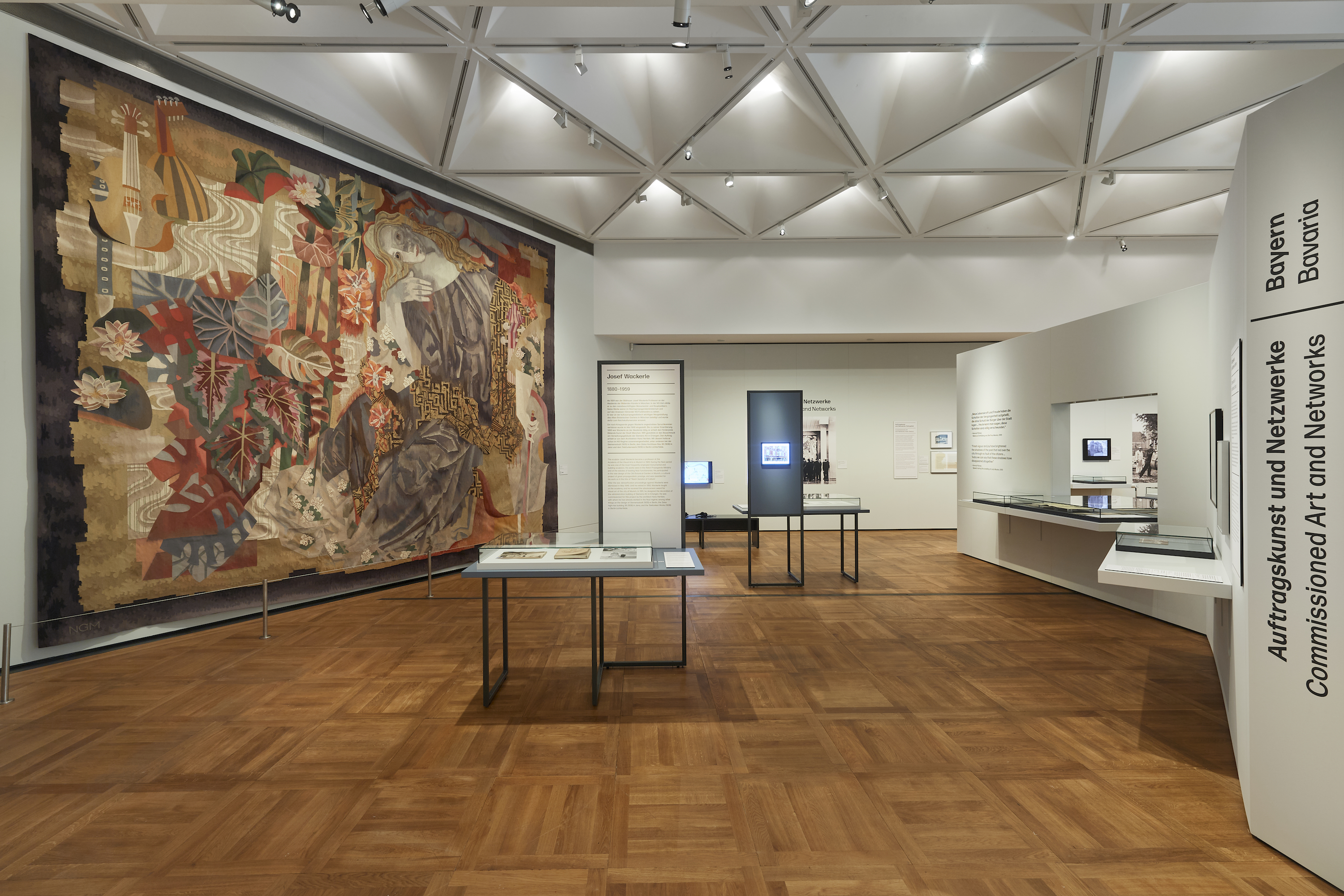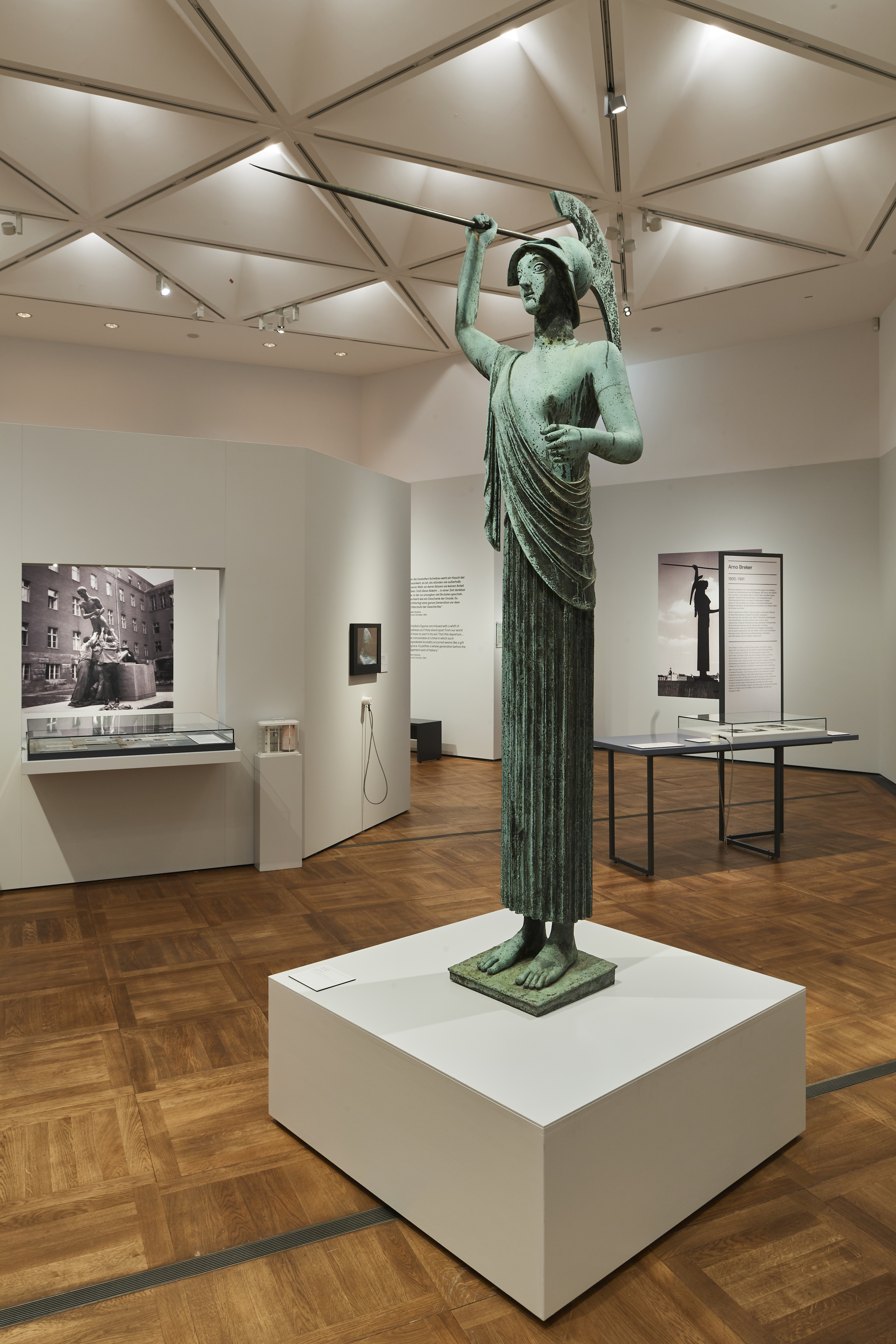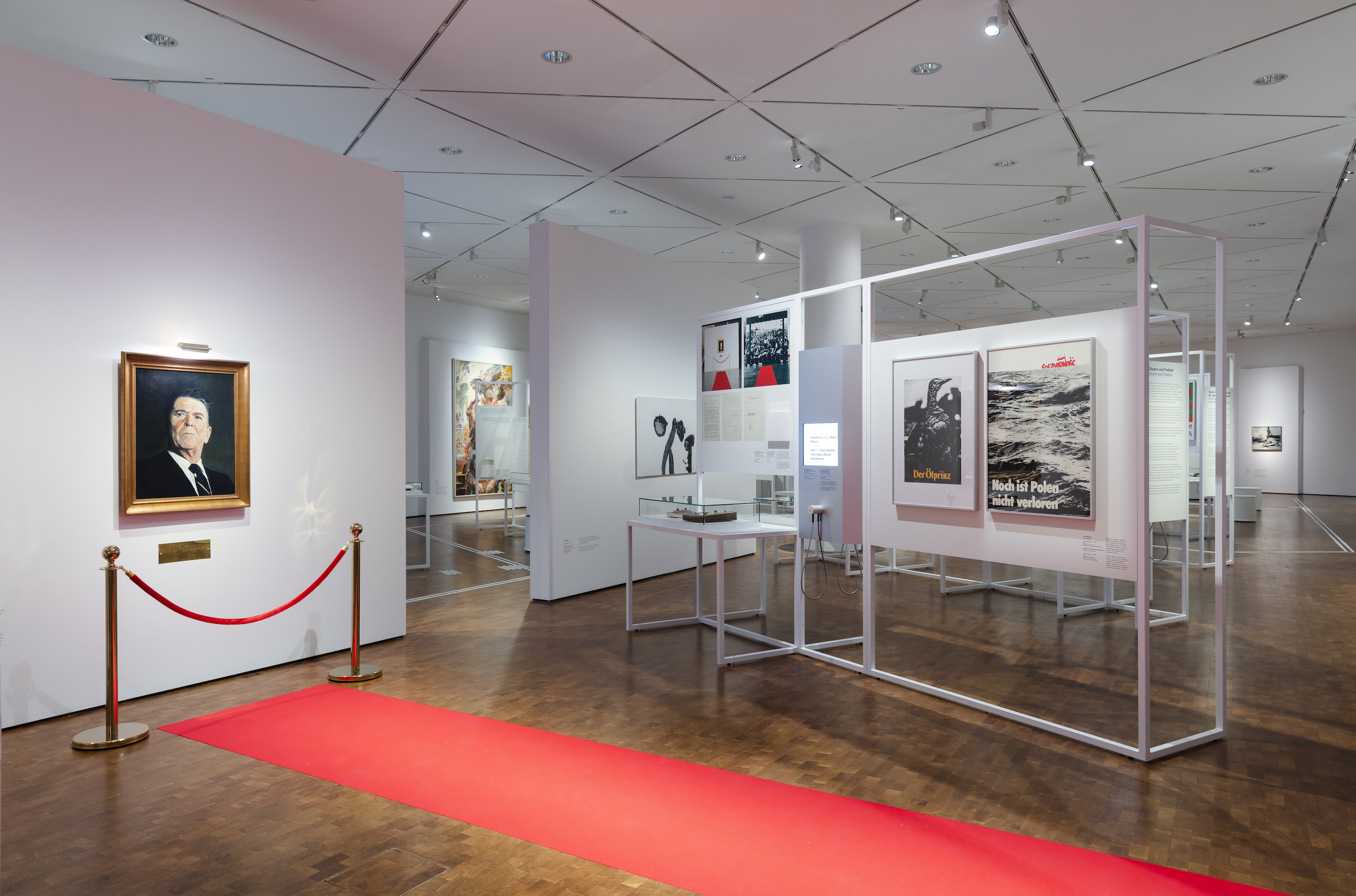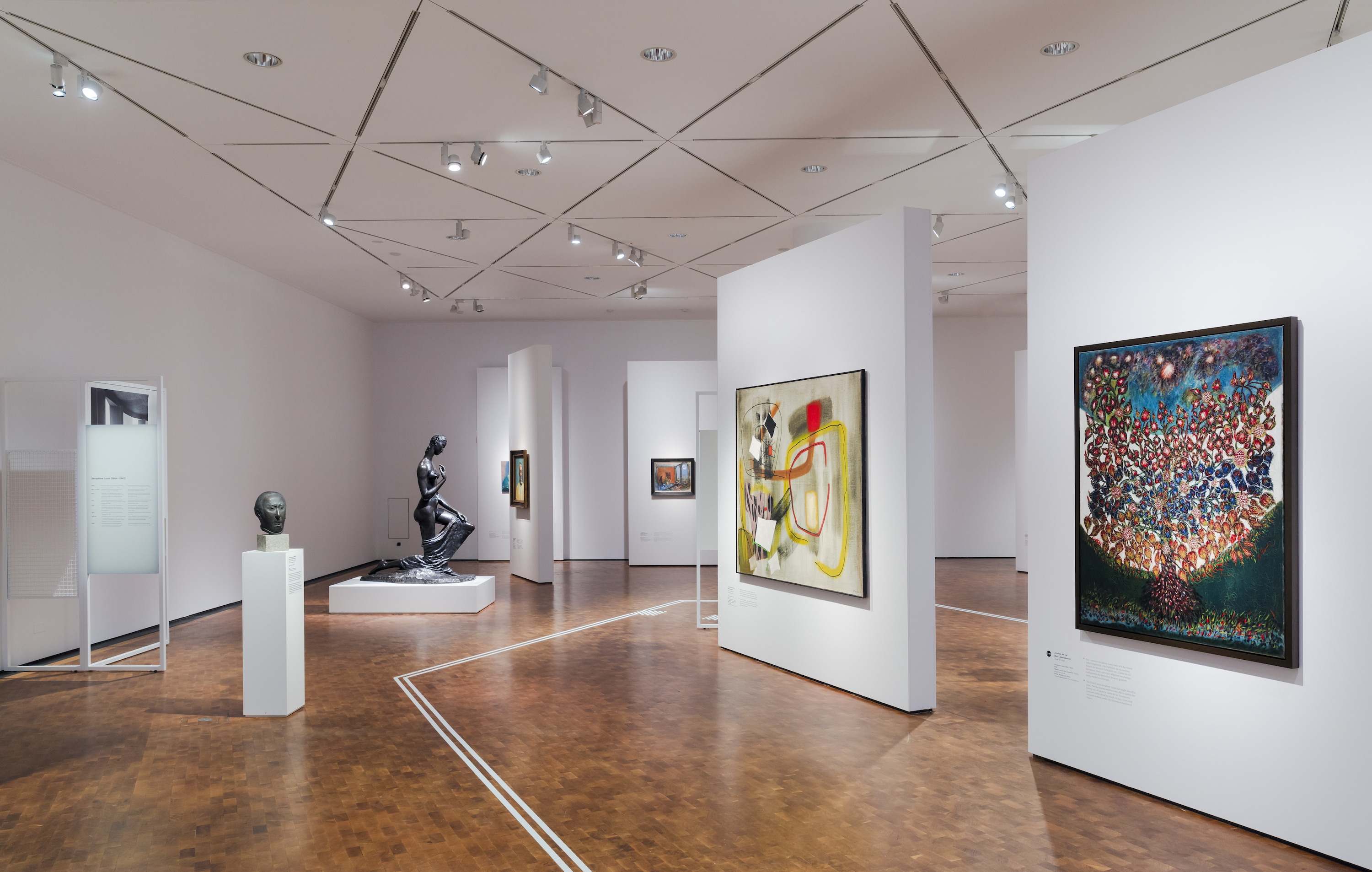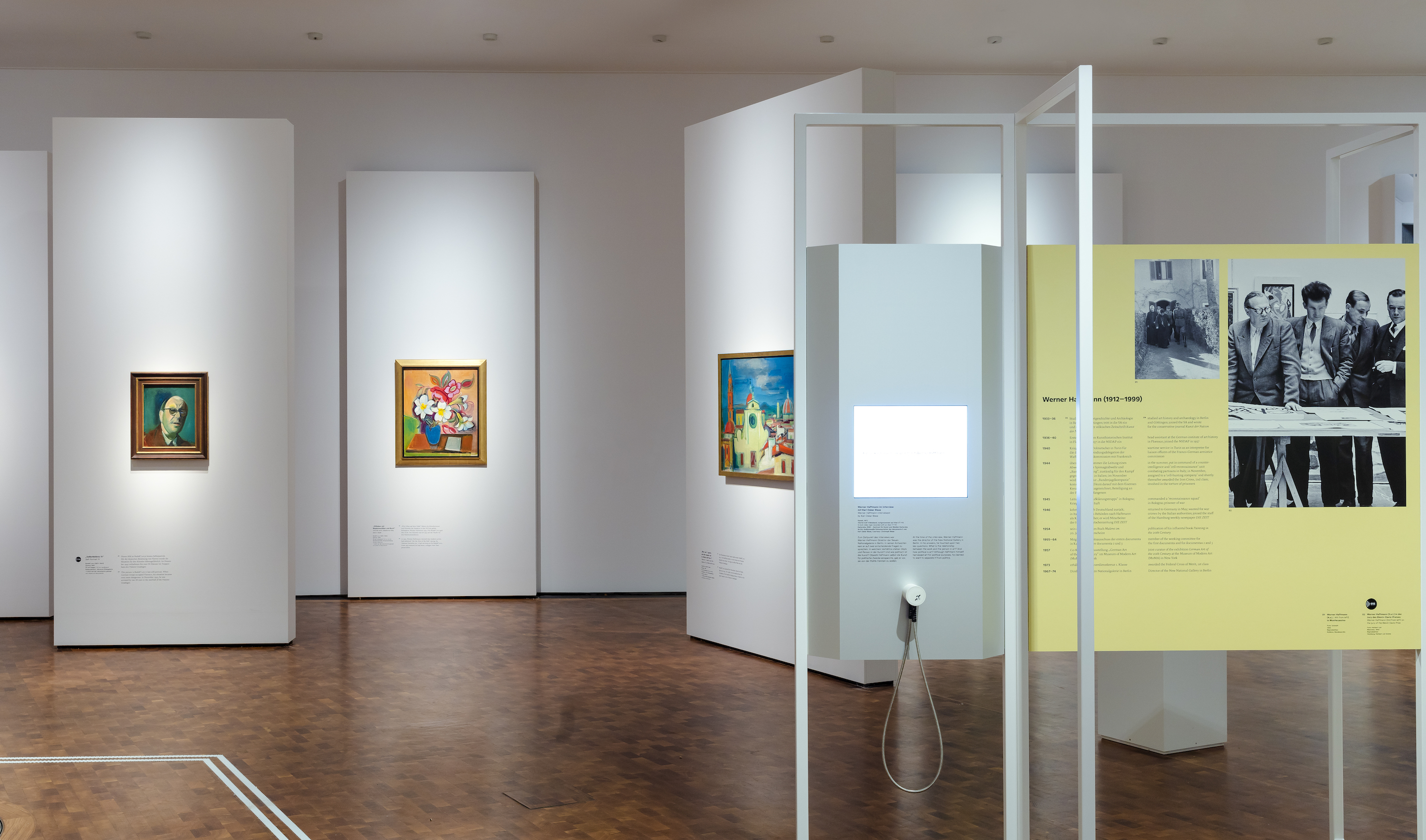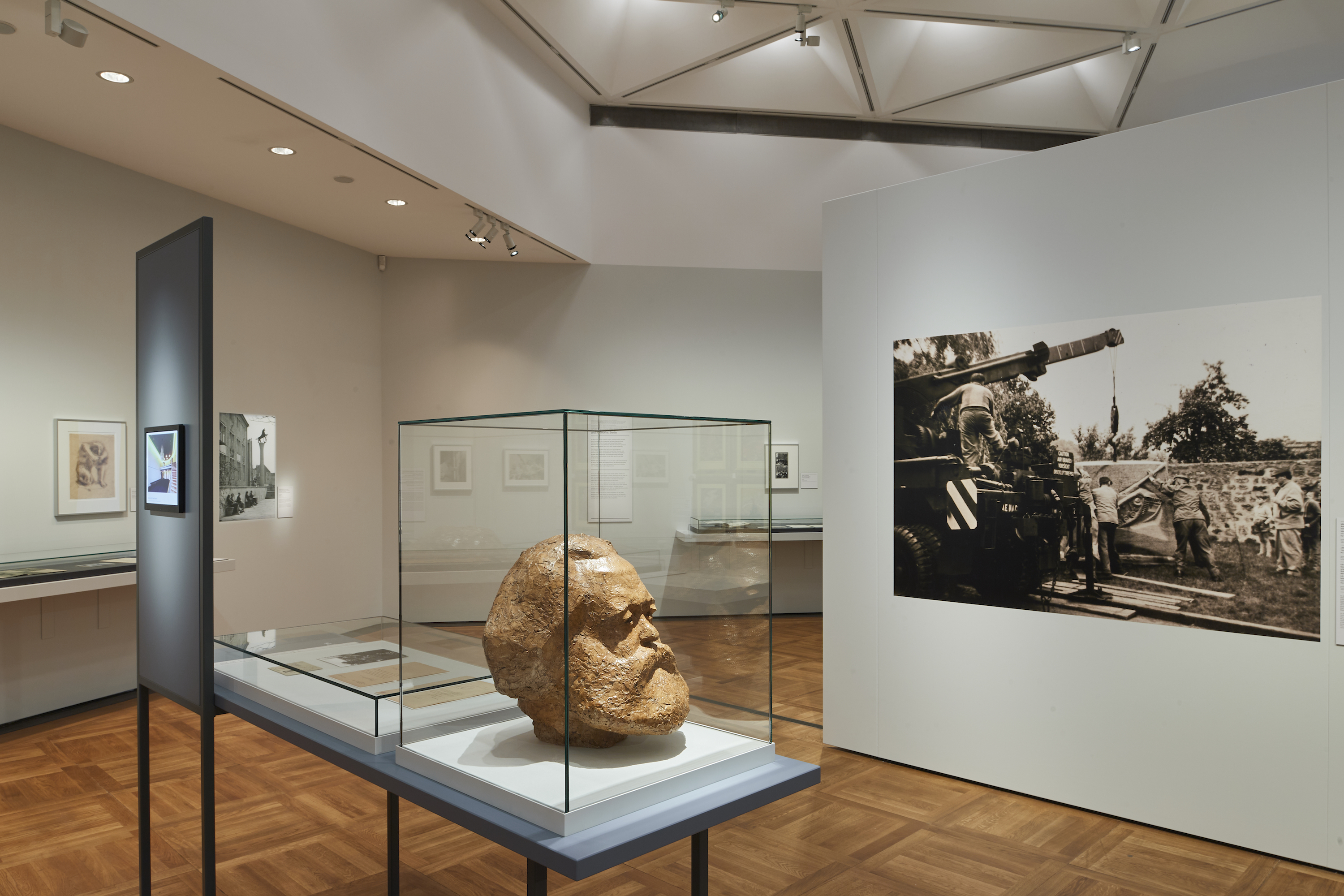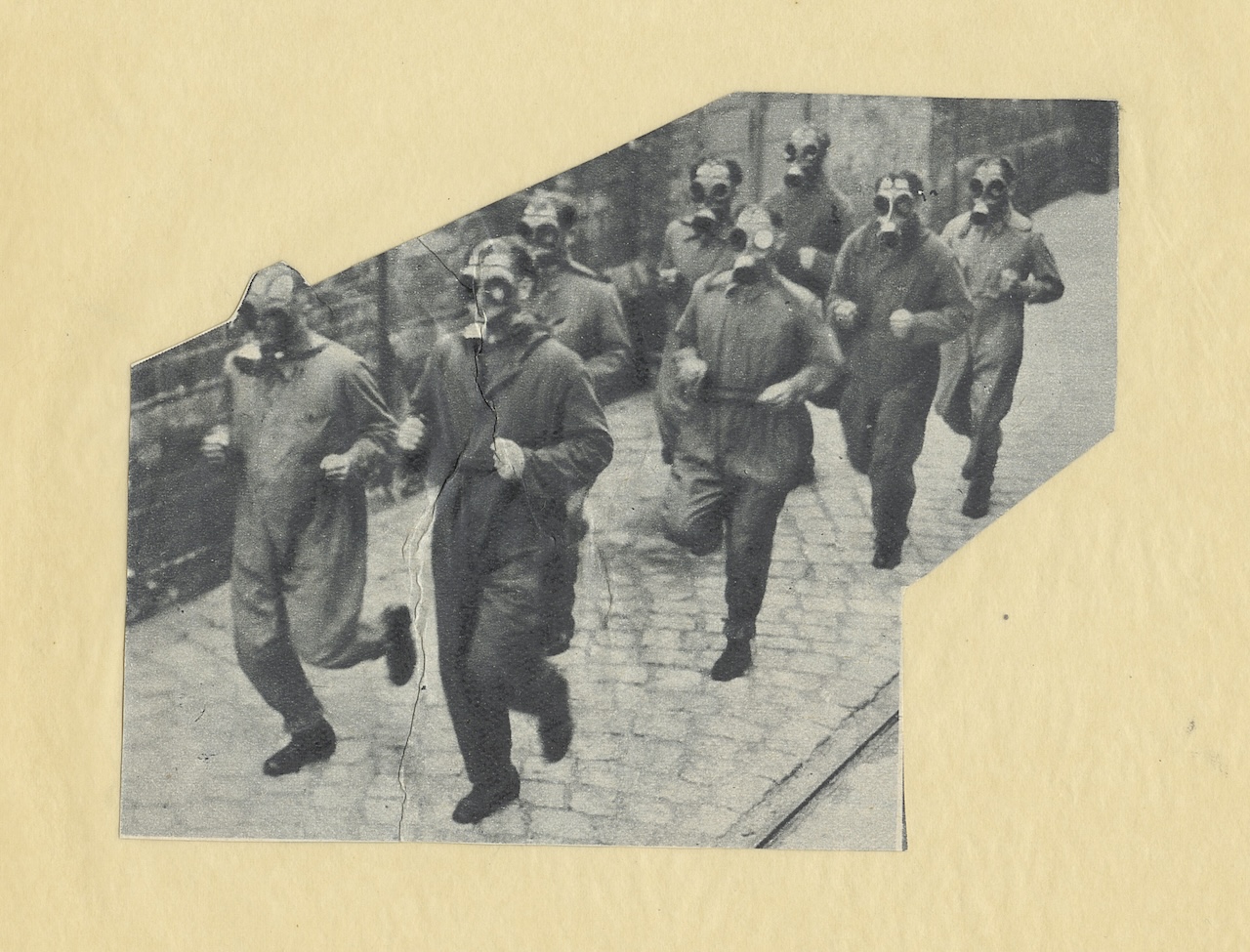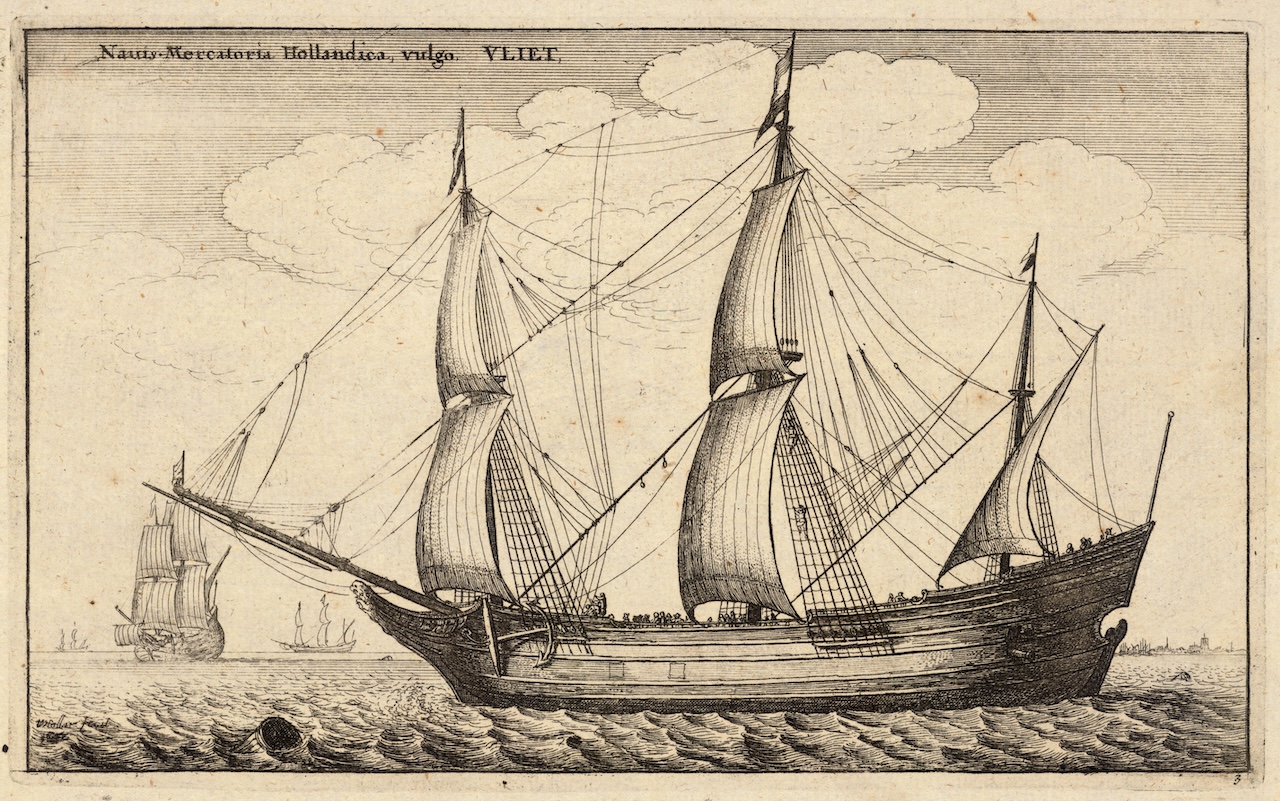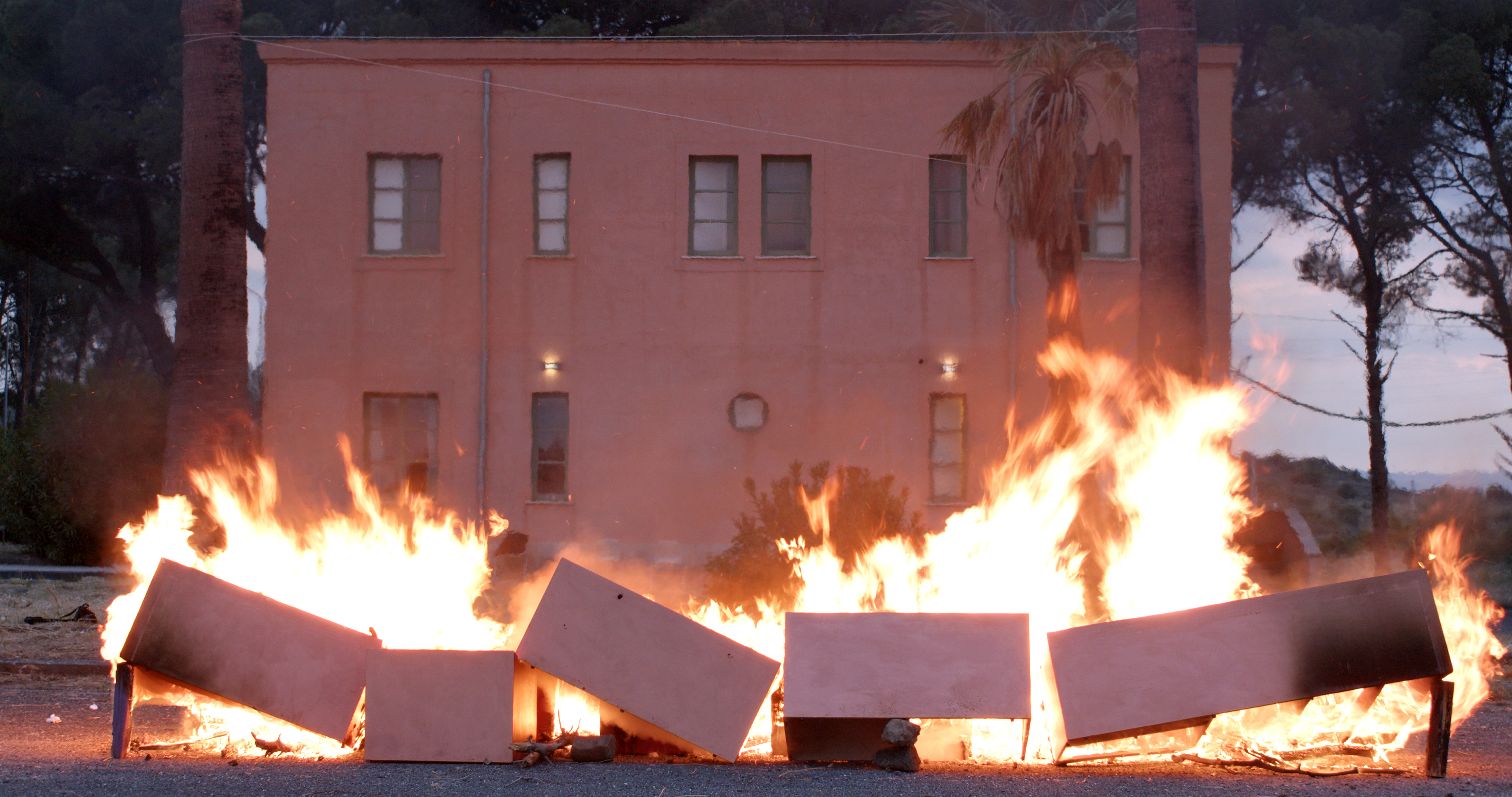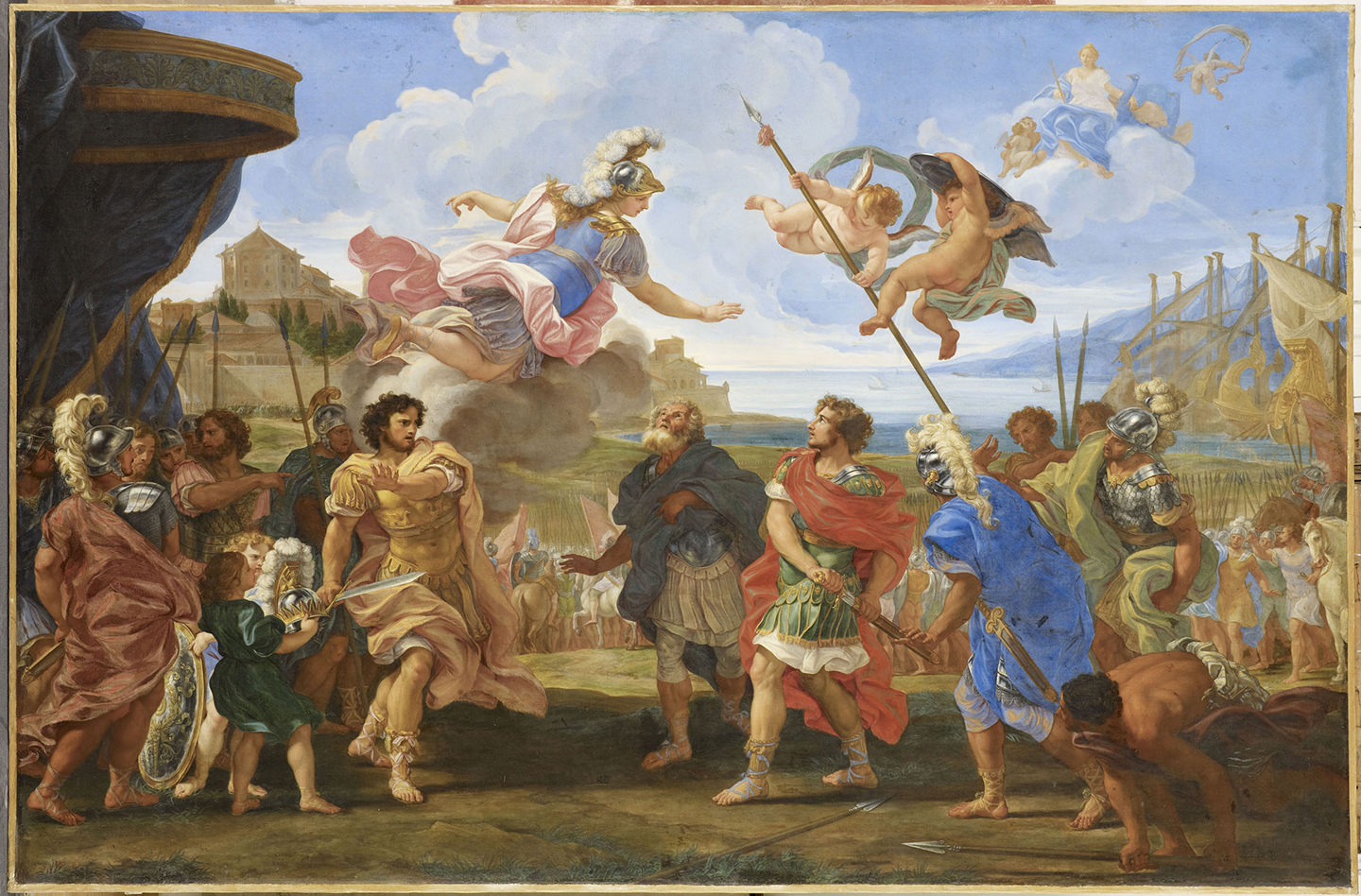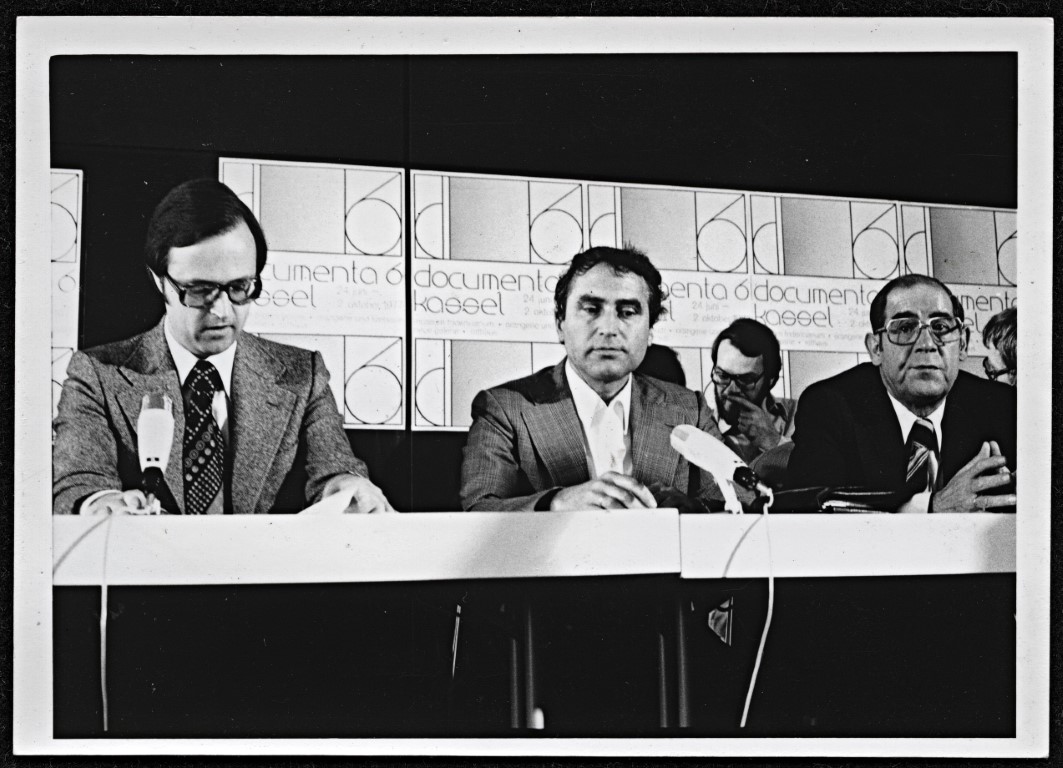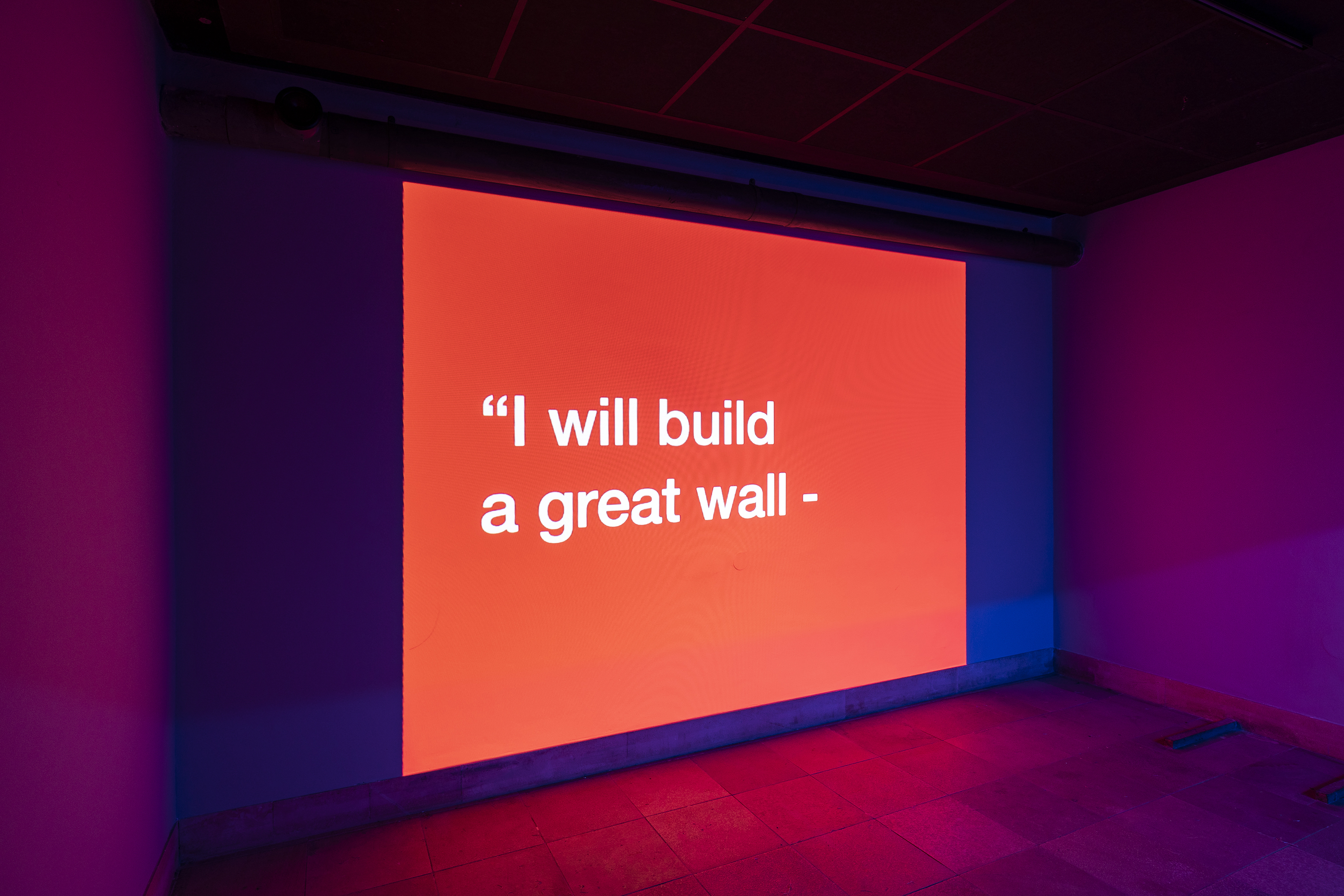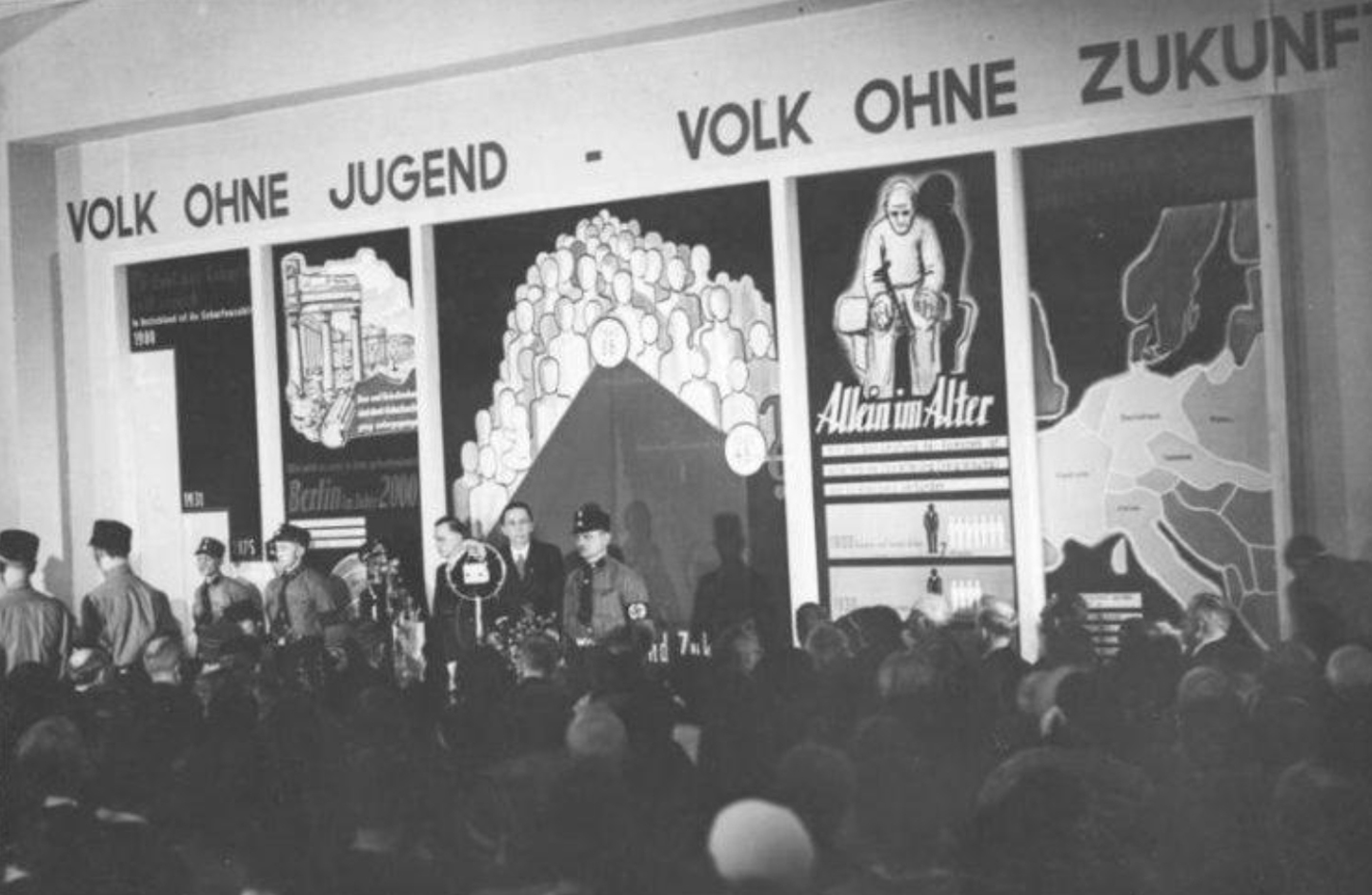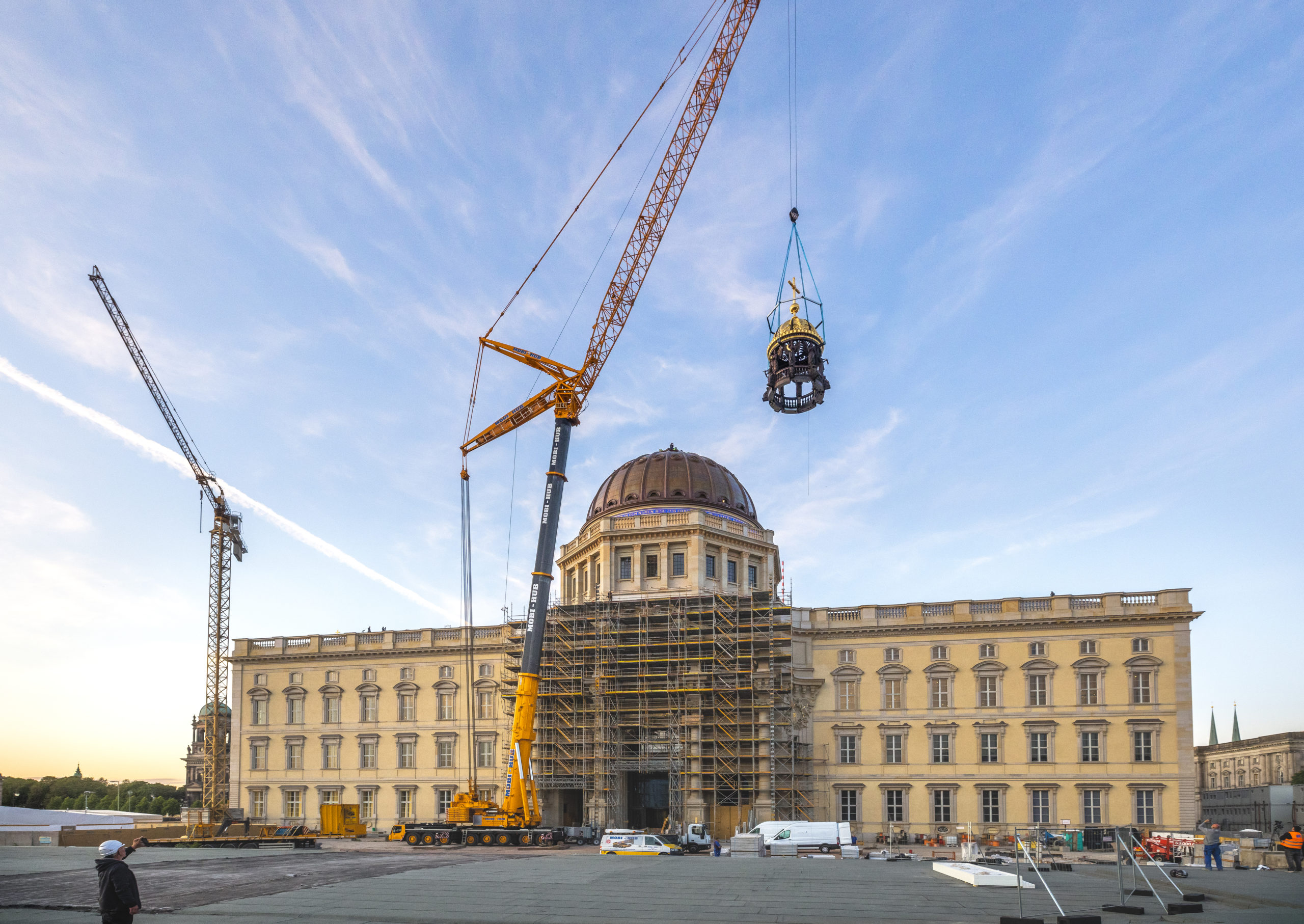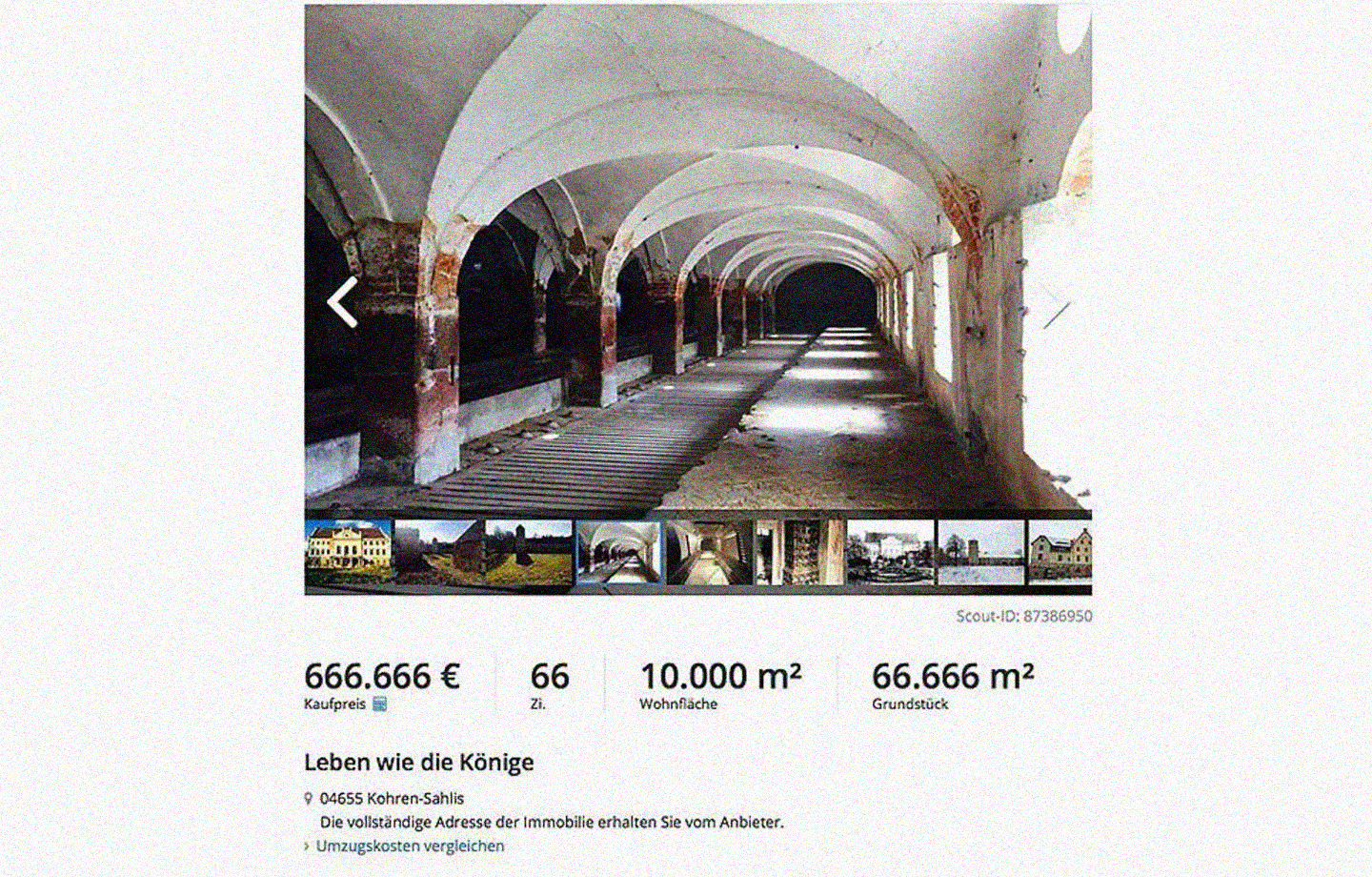On the August day in 1944 that Charles de Gaulle headed a liberation parade through Paris, Joseph Goebbels noted in his diary: “We are drawing up a so-called ‘list of the Divinely Gifted,’ of about 300 to 400 truly outstanding artists, who will have an impact beyond their time, and who are to be exempted from frontline and labor service. These artists will be recruited from all branches of our cultural life.” The list was put together the following month, and included 114 (exclusively male) sculptors and painters. Typewritten on standard paper, the list is held in the Federal Archive of Germany in Berlin. Yet no-one had made a concerted effort to look up these names and see who among them made a career in postwar Germany, let alone make an exhibition of it, until now. The fruit of that research is “‘Divinely Gifted’: National Socialism’s Favored Artists in the Federal Republic” at the Deutsches Historisches Museum (DHM) in Berlin.
It is widely known that some Nazi artists continued their careers after the war, most famously Hitler’s favorite sculptor, Arno Breker. Declared a “fellow traveler” of the National Socialists in 1948 by an Allied de-Nazification tribunal, he continued to receive significant commissions, including a bust of former German Chancellor Ludwig Erhard in 1970 and sculptures of chocolate manufacturer Peter Ludwig and his wife Irene in 1987 (eleven years after their donation of a substantial collection of American Pop Art prompted the founding of Cologne’s Museum Ludwig).
Yet the received wisdom was that, the odd Breker aside, there had been a radical break with the artists of the Nazi era and their out-of-proportion pomp, stuffy academic techniques, and “heroic” idioms steeped in mystified, supposedly Germanic roots. That break was manifested in the establishment of Documenta in 1955, with its narrative of rehabilitation of the global language of modernism. Indeed, the co-founder of Documenta, and later founding director of West Berlin’s National Gallery, Werner Haftmann argued that Nazi art had “disappeared overnight, without a trace,” and like Hitler “had also died—silently.”1
The DHM under the direction of Raphael Gross seems determined to bust these myths. Gross was previously director of Frankfurt’s Jewish Museum and the Fritz Bauer Institute, the latter an institution that focuses on studying the history and impact of the Holocaust. First, DHM opened an exhibition about the history of Documenta earlier this year. “Documenta. Politics and Art” brings to light new findings that suggest Haftmann had an interest in claiming that Nazism, and Nazi art along with it, had vanished “without a trace”: as Italian historian Carlo Gentile had recently uncovered, Haftmann personally tortured and killed Italian partisans during the war.2 The exhibition goes on to show how Documenta under Haftmann reestablished artists like Emil Nolde—who claimed to have been in “inner exile” under the Nazi regime, another lie recently disproved—while purposefully ignoring Jewish-German artists such as painter Rudolf Levy, who in 1943 was arrested in Florence by the Gestapo—he had a studio in a boarding house previously occupied by Haftmann—and subsequently died on the way to Auschwitz.3
These two exhibitions work together to expose a double repression that occurred in postwar Germany: while Documenta effectively claimed Nazi art was finished and modernism restored, a number of Nazi artists continued to thrive. The almost schizophrenic contradiction was ignored, glossed over, explained away, and only occasionally critically called into question and protested, especially in the wake of the 1968 student movement. It is stunning to see 1970s footage from a West German public television program that shows, for example, a spry Werner Peiner—the painter equivalent to Breker, championed by the National Socialist elite—thriving in a Mediterranean-style villa with a voluptuous garden. He justifies his position as an artist by pointing out that it wasn’t easy for him to continue after what he simply calls the “breakdown,” while he carefully avoids even using words like “Nazi” or “Hitler” (a strategy also followed by Breker).
Some of Peiner’s works are on display in the exhibition, and they are the perfect illustration of the Third Reich craving for loud, pompous kitsch. He cites Old Master tropes but pumps them up with loaded symbolism, exaggerated gestures and mimes, and screaming colors. A case in point is the 26-part cycle Dämonen der Stunde [Demons of the Hour] (1944), one of which depicts “Terror,” a muscular, bare-chested fellow leaning on the handle of an axe and wearing a blood-red executioner’s cap. The Slovenian post-wave industrial band Laibach pointedly adopted that very image as the cover of their 1987 album Opus Dei, juxtaposing it on the inner sleeve with John Heartfield’s 1934 anti-fascist collage of four axes forming a swastika (The Old Motto of the “New” Reich: Blood and Iron).
This exhaustive exhibition is based on research by Wolfgang Brauneis (a left-field art historian who is also co-founder of a-Musik, a revered avant-garde and electronica record shop in Cologne). He provides ample evidence that the postwar career of Breker was not the exception but the rule. The few postwar critiques are documented—from critical newspaper articles to street demonstrations, for example, against a Breker show in West Berlin in 1981—but it remains shocking to see how not only the artists, but more gravely their commissioners, often prominent political figures, and the institutions they represented, brazenly continue.
In 1968, students at Munich’s Art Academy organized a small exhibition with the title “The Case of Hermann Kaspar,” documenting the artist’s Nazi past and taking issue with him still holding the professorship he had gained in 1938 and continued after just a short break in 1946. This was an artist who had been commissioned to decorate Hitler’s office at the Chancellery and made Swastika mosaics for Munich’s Haus der Deutschen Kunst, yet Kaspar not only remained at the Art Academy until his retirement in 1972 but was also commissioned to create a large-scale tapestry for Nuremberg, the city best known for the Nuremberg Laws, Rallies, and postwar Trials. Titled Die Frau Musica [Lady Music] (1969), it is a shameless Botticelli-meets-Klimt pastiche depicting a woman surrounded by stringed instruments and, strangely, the leaves of a Swiss cheese plant. There was a protest letter against the commission in 1966, but the work was nevertheless installed in 1970.
This is just one of many stories that the exhibition documents meticulously, devastatingly. It also shows how, during the 1960s and ’70s, pseudo-art-historians such as Richard Eichler, who brought out a highly successful volume called Könner, Künstler, Scharlatane [Experts, Artists, Charlatans] (1960), promoted an anti-modernist, reactionary understanding of “gifted” art that only just stopped short of openly praising the Nazis’ identification of “degenerate art.”
According to Brauneis, the only proper scholarly research on the topic prior to this exhibition was the 1994 dissertation of Irith Dublon-Knebel, written in Hebrew and supervised by Saul Friedländer in Tel Aviv. In the catalogue of the “Divinely Gifted” show, Dublon-Knebel identifies a number of strategies that Nazi artists had developed to muddle through the postwar period: avoid the obvious references to Nazi symbols and motifs, but continue a conservative, academic figurative style; if you had a significant career before 1933, don’t apologize but simply deny that your art changed during the Third Reich; get yourself associated with earlier art movements, such as Jugendstil; carry yourself in the most self-assured way, as if nothing had happened (Breker was especially good at this); apply for public commissions when you know the jury will like your conservative style, and bear out the ensuing protest.
As Dublon-Knebel points out and the exhibition exemplifies again and again—not least with a digital map of the hundreds of publicly commissioned sculptures and murals still in place across Germany and Austria—these artists continued to thrive because they catered to the taste of that good part of Germany’s postwar bourgeoisie which remained unwilling to confront its Nazi past.
Nevertheless, the effrontery remains stunning. Take for example Kaspar, who in his eagerness to please the Nazi elite produced some of the most irritating schlock. Commissioned to conceive an opening parade at the Haus der Deutschen Kunst (today, Haus der Kunst) in Munich in 1937, he designed a succession of floats that cross provincial carnival with early Hollywood epic, full of Wagnerian Vikings and fantasy crusaders, as well as marching SS officers. The whole thing was titled—apparently Hitler’s idea, not a Mel Brooks joke—“2,000 years of German Culture.” Kaspar’s drawings show that he cared for all the decorative detail, making the affair all the more delirious.
But what to actually make of all the things that the “Divinely Gifted” exhibition has brought to light? Henrike Naumann’s exhibition “Einstürzende Reichsbauten” [Collapsing Reich Buildings] at the former studios of Arno Breker, nested in the exclusive residential area of Dahlem in West Berlin, provides a few answers. Today, the stocky brick structure, built between 1939 and ’42, is the Kunsthaus Dahlem exhibition space. Naumann, who has a background in set design, has previously made poignant work about far-right youth culture and the murderous terrorist group National Socialist Underground. This makes her especially well equipped to address the history of this edifice and its disturbing aura.
Entering the building, you pass through a sleepy café under a ten-meter ceiling to encounter the gargantuan door to the studio space. Naumann excels on the eagerness for exaggerated height that is typical of Nazi art, bringing it hilariously forth with her reinterpretation of the space as a deranged living room. A round table is set with a candle holder, a wooden vase, and a wineglass that all feature an oddly meandering form—as if you were looking at them in a drunken stupor—while a bowl is nested inside a bowl, flanked by huge wooden salad servers, again suggesting that these are the living quarters of a bachelor giant with a rather quirky taste in interior design. These oversized elements are offset by carefully placed counter-effects such as a regular-sized glass-topped coffee table with steel legs in the form of headless naked bodybuilders, on which a dollhouse dining table is placed. On top of that, in turn, is a miniature flokati rug and a life-sized metal hand making the “OK” sign that has become a coded gesture of white supremacy.
There are further ciphers and hints in this strange scenario, from the larger-than-life metallic figure resembling an Oscar trophy that emerges as if chiseled by Breker from a block of stone, lifting tackily designed bedside lamps as if they were weights. On the mezzanine gallery a set of black living-room cabinets with triangular tops are arranged like a mountain range, while speakers emit what sounds like a male choir singing an old song about Barbarossa (according to the nineteenth-century fairytale, beloved of Neo-Nazis, the medieval emperor will emerge from the cave in which he lives eternally to restore order to the land). In fact, Naumann’s music collaborator Bastian Hagedorn sang all the parts himself.
It becomes apparent that Naumann sourced 1990s furniture design disasters (found on Ebay and elsewhere) and combined them with Nazi-era furniture loaned from Munich’s Haus der Kunst (where Naumann had installed a similar setting in 2019), including tables and chairs in the then-popular mix of rustic style and watered-down Biedermeier. The combined effect is unerringly bizarre, as if someone had taken elements from Hitler’s Berghof mountain chalet (with the black cabinets standing in for the view) and his uncannily oversized Berlin Chancellery office to furnish a contemporary provincial chain hotel lobby.
To be clear, there is not the slightest edgelord frivolity here. The oddity of the arrangements is not only an eloquent send-up of far-right aesthetics, but also brings out the ingenuities of the postwar Vergangenheitsbewältigung [coming to terms with the past]. The same old fascist attitude is resold through new faux-generous, international style references, just like Kaspar with his Nuremberg tapestry. It’s not incidental that Naumann includes one of Kaspar’s large-scale drawings for the Munich parades in the installation.
These exhibitions deliver three important takeaways. Firstly, a lot of postwar gesturing towards modernity and civility, including the beginnings of Documenta, amounted to a cartel of silence and a—clever and effective—cover-up. And that was the case to a much larger extent than most (including me) had previously assumed. That cover-up would become a blueprint for the denials and distractions we are now seeing in regard to Germany’s colonial history, highlighted by the opening of the Humboldt Forum and its controversial ethnographic displays.4
The second is that genuine reflection on the Holocaust and other crimes against humanity committed by fascist Germany became mixed up with Nazi whitewashing and Cold War blaming tactics. If there is to be a true reckoning with the past, it will take more than simply adding to its remnants—namely the many artworks still disgracing German cities—a small, disabusing plaque (though that would be a start). And to be clear, simply removing these works would finish the job of the cartel of silence described above. Instead we need to consider their place and proportions, rearrange and possibly relocate them, and juxtapose them with other shapes and ideas. That is, we need public debates, and we need artistic and historiographic interventions into these works’ placement and structure. Naumann gives a few practical examples of how that might work.
The third takeaway follows from the other two. The process of uncovering, reflecting, and recontextualizing the past is never completed. There is something very Sisyphean about that. Artists, historians, and activists, along with any citizen willing to engage with their proposals and findings, are continuing to do that work. Every generation has to start all over again, (almost) from scratch. To paraphrase the second-wave feminist writer Silvia Bovenschen and an aphorism coined to describe the fight for women’s rights but holding true for any effort to resist political suppression and historical amnesia: there is no subscription deal on progress.
“‘Divinely Gifted’: National Socialism’s Favored Artists in the Federal Republic” is at the Deutsches Historisches Museum through December 5. “Documenta. Politics and Art” is at the same institution through January 9, 2022. Henrike Naumann’s “Einstürzende Reichsbaten” is at the Kunsthaus Dahlem through November 28.
Werner Haftmann, Ostracized Art. Visual Artists of the Inner and Outer Emigration in the National Socialist Era (Cologne: Dumont, 1986), 218, quoted in Wolfgang Brauneis, “The List of the ‘Divinely Gifted’”, in Wolfgang Brauneis and Raphael Gross (eds.), “Divinely Gifted”: National Socialism’s Favored Artists in the Federal Republic (Berlin: Deutsches Historisches Museum and Munich/London/New York: Prestel, 2021)
Carlo Gentile, “Dr. Haftmann's War," Süddeutsche Zeitung, June 6, 2021. https://www.sueddeutsche.de/kultur/werner-haftmann-nachkriegszeit-1.5314056
Catherine Hickley, “Stripping Away Lies to Expose a Painter’s Nazi Past,” New York Times (April 10, 2019), https://www.nytimes.com/2019/04/10/arts/nolde-nazi-exhibition-berlin-merkel.html
Graham Bowley, “A New Museum Opens Old Wounds in Germany,” New York Times (October 12, 2018), https://www.nytimes.com/2018/10/12/arts/design/humboldt-forum-germany.html
